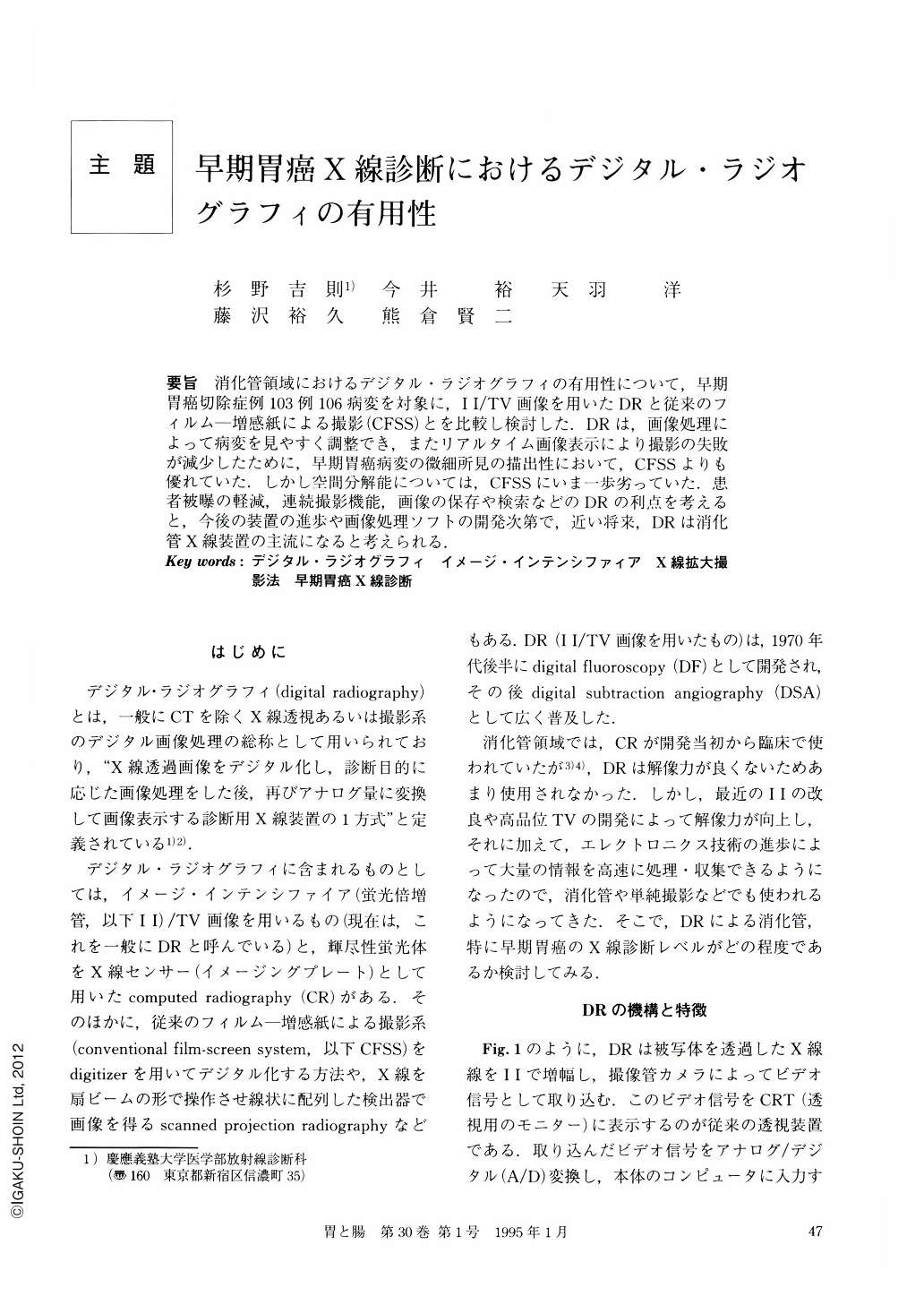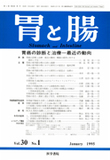Japanese
English
- 有料閲覧
- Abstract 文献概要
- 1ページ目 Look Inside
- サイト内被引用 Cited by
要旨 消化管領域におけるデジタル・ラジオグラフィの有用性について,早期胃癌切除症例103例106病変を対象に,ⅠⅠ/TV画像を用いたDRと従来のフィルム―増感紙による撮影(CFSS)とを比較し検討した.DRは,画像処理によって病変を見やすく調整でき,またリアルタイム画像表示により撮影の失敗が減少したために,早期胃癌病変の微細所見の描出性において,CFSSよりも優れていた.しかし空間分解能については,CFSSにいま一歩劣っていた.患者被曝の軽減,連続撮影機能,画像の保存や検索などのDRの利点を考えると,今後の装置の進歩や画像処理ソフトの開発次第で,近い将来,DRは消化管X線装置の主流になると考えられる.
The purpose of this study is to assess the efficacy of digital radiography (DR) using image intensifier (Ⅱ) to improve the visibility of early gastric cancer in 103 cases (106 lesions). All cases were resected and histopathologically examined in Keio University Hospital from Sept. '90 to Mar. '93.
Our data showed that radiographic magnification images obtained using DR had almost the same spatial resolution as images obtained by conventional film-screen system (CFSS). However, the image from DR was more persuasive than that from CFSS, because of post-processing.
Concerning the visibility of subtle findings such as the contour of the lesion and granules of more than 1 mm on the mucosal surface, DR was estimated to be better than CFSS, while for depicting fine granules less than 1 mm and subtle barium fleck, DR couldn't be regarded as superior to CFSS. The post-processing with a spatial filter was useful to better demonstrate the lesion. However, the excessive enhancement was considered to spoil the subtle findings of early gastric cancer.
Regarding patient exposure, DR was able to reduce the surface radiation dose to 30~40% of CFSS per one exposure.
Another advantage of using DR was the real-time image acquisition, and this simultaneous image on CRT helped us to decrease technical failures.
In conclusion, the current DR system can be said to have sufficient efficacy in gastrointestinal radiology. By improving the image resolution and image-processing, DR will be able to replace CFSS in the near future.

Copyright © 1995, Igaku-Shoin Ltd. All rights reserved.


